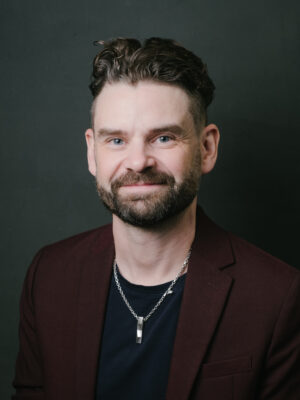
Oura’s Antti Hermunen on how to deal with the creeps and the challenge of time in digital product development
Antti Hermunen, Senior Engineer Manager at Oura, knows a thing or two about combining software and hardware development. Mostly he’s interested in making software less late and more on point.
Oura is a true Finnish health tech success story: It is worn by users from athletes to royalty and managed to clinch a collaboration with Gucci. As USA Today said, it is an absolute marvel of modern wearable technology. Oura’s dedicated plan to produce finessed personal data to guide the individual health journeys of its users seems to be working.
You can’t pull a stunt like that without having multiple battles with time and winning most of them.
“Everyone is late sometimes, it’s part of the game. But what’s really important is that, instead of just releasing something, you make sure that the products you build create value for the end user.”
Hermunen talks about deadlines, knowing your project’s limits and how failures in time management can destroy culture and teamwork. For instance, your attitude to crunching can have serious long-term consequences.
“If you have a careless attitude to crunching, allocating too much work for the team can easily become a habit – and you can’t expect people to work overtime all the time. You’ll end up losing developers and knowledge”, Hermunen says.
Keep the creeps out of your project: control the scope and amount of features
Scope creep and its cousin feature creep are well-known pitfalls in software development. Yet, they are very common. In scope creep, the project’s scope grows and changes uncontrollably during the project. Feature creep means constant, excessive expansion or addition of new features.
“Products do need new features and the scope of a project can grow or change, but the key here is that it should not be an uncontrolled development.”
The creeps also have a third cousin who’s even worse: gold plating. That’s when you work on a project or task past the point of diminishing returns.
“Make releases as often as possible and as soon as you’re ready – that’s one of the most important lessons of software development.”
Three tips for setting up successful deadlines in software development
Deadlines are more or less essential to every project. But if you set them in an unreasonable manner, they can also become a great source of stress and havoc. Here are Hermunen’s tips on how to set fair and smart deadlines.
1. Keep software and hardware deadlines separate
Oura runs both software and hardware development. Hermunen says it’s crucial to keep the deadlines of these separate.
“If you make your software releases wait for the hardware releases, you start creating monoliths.”
2. Ask the team for estimates
Making promises and setting deadlines without consulting the team is not cool. Instead, it can feel rude and presumptuous.
“Try asking your team first – where are you really at and what’s the status? Promising something too optimistic on others’ behalf is a great way to destroy teamwork and culture.”
3. Don’t promise anything to the market in advance
If possible, consider your deadlines as tools for internal time management. And no matter what you do, avoid promising new features to the market before you are certain you’ll have them ready.
“You can always do marketing after the release, but if you promise to deliver something and miss the deadline it will weaken your relationship with your customers.”
Join Qvik’s next Digital Product meetup?
This article is based on Qvik’s Digital Product Meetup held on March 9. The DiP meetups are a place for product managers, product owners and people in product management to discuss and learn about relevant themes.
Our next event will be on May 4 with the topic Digital Product Meetup with Virta – Digital EV charging on a global scale. Virta is a global pioneer in developing smart EV charging solutions. More than 1,000 organisations in retail, hotel, parking, real estate and energy industries use Virta’s platform – and in 2023, Financial Times placed them on the 1000 Europe’s Fastest Growing Companies list for the fourth time in a row.
Jussi Ahtikari, Chief Technology Officer at Virta, will share an inspiring story on how Virta started digitalising and modernising old, hardware-based business models. How did Virta get to its leading position? What are the most important things to consider when designing a global digital platform? Should you build or buy?




